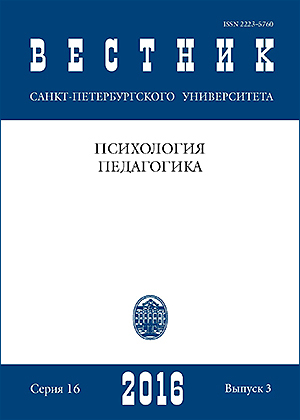Theory of mind and features of creating discourse in children from 4 to 6 years
DOI:
https://doi.org/10.21638/11701/spbu16.2016.313Abstract
Th e article presents the results of a study of the Th eory of Mind as a mental basis of the process of creating narrations during communication. Methodical tasks and methods of evaluation were con-structed to describe communication messages. Analysis of various information parameters of narra-tions was carried out on basis of more than 150 retellings of preschool children about events relating diff erent content: events of mental and physical causality and humorous events. Th e results demon-strate the consistency in development of mental understanding and informative retellings as well as some features in the construction of narratives.
Keywords:
Theory of mind, communicative success, narrative discourse, the information content of messages
Downloads
References
References
Downloads
Published
How to Cite
Issue
Section
License
Articles of "Vestnik of Saint Petersburg University. Psychology" are open access distributed under the terms of the License Agreement with Saint Petersburg State University, which permits to the authors unrestricted distribution and self-archiving free of charge.




